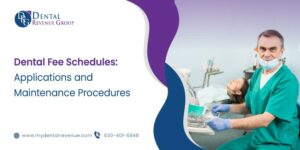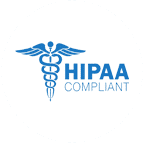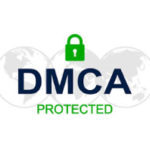Billing errors are a common issue in dental practices, and they can potentially lead to fraudulent billing and other problems. Detecting vulnerabilities and frauds in dental billing is crucial to protect patients and healthcare systems from the detrimental effects of fraudulent activities. Healthcare fraud is a significant issue that results in financial losses and harms the beneficiaries. The costs associated with fraud are often transferred to the population through increased premiums or inadequate medical care. Therefore, there is an urgent need for advanced digital systems to identify fraudulent activities and prevent them from occurring in the first place. This blog will explore effective methods for detecting vulnerabilities and fraud in dental billing.
Understanding Fraud and Abuse in Healthcare
In healthcare, inappropriate payments by insurance companies or third-party payers can occur due to errors, abuse, or fraud. Abuse refers to providers’ practices that result in unnecessary costs to the payer and are inconsistent with the goals of providing medically necessary services to patients. On the other hand, healthcare fraud is an intentional deception used to obtain unauthorized benefits and is considered a criminal act. Although there is no consensus on the definition of fraud and abuse, it is estimated that about 10% of healthcare expenditure is wasted due to these practices. Therefore, health systems must prioritize addressing and preventing fraud and abuse to reduce healthcare costs and ensure that patients receive appropriate care. Examples of fraud and abuse include billing for services not rendered, kickbacks, and misrepresenting medical conditions to obtain payment. Healthcare providers should be vigilant in detecting and preventing fraudulent activities to protect the integrity of the healthcare system and improve patient outcomes.
Detecting Genuine Dental Practices through Billing Methods
Look for the following:
- Consistency in billing is key for dentists to maintain trust with their patients. Using the same billing method for every patient ensures timely payments and the safety of funds. If a dentist has multiple offices, each office may have its own billing method, but using one method at every location shows consistent billing practices. This consistency is an indicator of a trustworthy dentist.
- Look for dental offices with clearly labeled windows showing the services performed during your visit. This helps patients who need follow-up care after their initial visit. However, some offices don’t allow access to back areas due to privacy concerns. This can make it easier for fraudsters to use patient information and make fraudulent claims.
Common Forms of Dental Fraud and Abuse
Dental offices are human, and they can’t be perfect. This means that some of the things a dentist does will not always be as accurate or up-to-date as you need. In fact, some dentists might even rely on outdated software or hardware for their practices, which could lead them down an incorrect path when trying to bill patients correctly. Frauds in dental billing refer to any intentional deception or misrepresentation of treatment facts to gain unauthorized benefits. Here are some common forms of dental fraud and abuse:
Billing for services not rendered:
This is a common type of frauds in dental billing where a provider bills for services not provided. It’s illegal and can result in criminal charges if discovered.
Misrepresenting service dates:
Changing the service date to take advantage of early deductible requirements is fraudulent. This matters to insurance companies as there may be a waiting period before benefits being available.
Waiving of coinsurance or copayments:
Providers cannot waive patients’ deductibles or copayments as it drives up premium costs for policyholders. It’s illegal overbilling and is considered fraudulent.
Misrepresentation of services:
Incorrect diagnosis or coding procedures for higher reimbursement is fraudulent and can entail liability. Changing codes decreases the patient’s maximum benefit and increases out-of-pocket expenses.
Unbundling of procedures:
Unbundling a dental procedure into parts to increase the cumulative charge is fraudulent. All aspects of the global fee for a procedure are expected to be included in one charge.
Upcoding:
Reporting a more complex or higher-cost procedure than actually performed bypasses reimbursement limitations and increases practice income. It’s illegal and can result in enormous fines, penalties, and exclusion from certain healthcare programs.
Medical Identity Theft:
Medical identity theft involves the misuse or unauthorized disclosure of a patient’s unique medical identification information to obtain fraudulent payments from the government or private insurance providers. This can also involve obtaining medical goods or services on behalf of the patient through fraudulent means.
HIPAA Section 231 expands the prior civil money penalty laws for fraud and abuse violations. The penalties have significantly increased from $2,000 to $10,000 per violation, and if services are both unnecessary and fraudulent, the practice will face a minimum penalty of $30,000 from one patient visit. You may be surprised to learn that dental offices can make mistakes in billing.
Methods for Detecting Frauds in Dental Billing
In today’s dishonest world, even small businesses run by dentists who may employ friends and family need to safeguard their assets and reputation. While many dentists may not have received formal education in business management, it is crucial to equip ourselves with the necessary resources to protect our employees and livelihoods. Here are the following ways to detect frauds in dental billing practices:
Patient History
One of the easiest ways to detect frauds in dental billing is to look at the history of your dentist’s patients. This can be done by examining their credit reports, showing you if they’ve ever been sued for fraud or denied an insurance claim. You should also check with Medicare, Medicaid, and other government agencies about potential issues to better understand whether any red flags could indicate fraudulent activity. The first step in identifying billing errors is to examine your dentist’s history. Your dentist should be able to provide you with a detailed list of all their bills and claims and any past due amounts or notes about specific payments that may need to be made.
If you find something fishy in the records, ask them about it! They should be able to explain why they are paying so much (or too little) now or how they can afford specific procedures without going into debt. Look at their record and see if they are making mistakes. If you find any, contact them immediately and ask them why they did it, what kind of mistake it was, and how we can fix it. You will want a professional who has been in business for a long time to know what kinds of things can happen when people try to get care from them without paying first (and then again after treatment).
Get Educated on Spotting “Red Flags” in Your Financial Operations
As a dental practitioner, protecting your practice from fraud and vulnerabilities is crucial. One way to do this is by educating yourself on how to spot “red flags” in your financial operations. “Red flags” are warning signs that indicate potential fraud or suspicious activities. By learning how to spot these warning signs, you can take steps to prevent fraudulent activities and protect your practice from financial losses.
One effective method for detecting “red flags” is using applications that monitor transactions in your accounts. These applications can identify unusual patterns or behaviors that may indicate fraudulent activity, such as unique billing practices, unauthorized access to patient information, or excessive refunds or credits. It is essential to remember that fraudsters are always looking for vulnerabilities in dental practices. They may exploit weaknesses in your financial operations or steal patient information to commit fraud. By staying vigilant and being proactive in preventing fraud, you can protect your practice and patients from potential harm.
Using Management System Reports
Management systems can provide useful tools for detecting fraud and vulnerabilities in dental practices. Reports generated by these systems can be used to identify trends and patterns in financial transactions, such as billing discrepancies or unusual payment patterns. By reviewing these reports regularly, dentists can detect and prevent potential fraudulent activities before they become significant issues. Additionally, management systems can provide alerts for suspicious activities, such as changes in patient information or huge transactions. These alerts can help dentists quickly identify and address potential issues.
Overall, dentists should take advantage of the reports and alerts provided by their management systems to detect and prevent fraud and vulnerabilities in their practices. Dentists can protect their practices and patients from fraudulent activities by staying vigilant and regularly reviewing financial data.
Background Checks for Employee Screening
Conducting thorough background checks on employees can help prevent fraud in dental practices. Employee screening should be a crucial part of the hiring process. Background checks can identify potential red flags, such as criminal history or past fraudulent activities. Falsification of credentials can also be detected through employee screening. Running background checks also enables the employer to verify the accuracy of the employee’s educational and professional history. Ensuring that the employee has the required qualifications, licenses, and certifications to perform their job duties is essential.
Background checks can also reveal if the employee has any financial difficulties or a poor credit score, which could indicate a higher likelihood of financial impropriety or embezzlement. Conducting background checks can be done through various methods, such as performing criminal record checks, reference checks, and verifying credentials. This process can be outsourced to a professional screening company or conducted in-house using online resources or public records. Dental practices can significantly reduce their vulnerability to fraud and protect their assets and reputation by thoroughly vetting potential employees.
Final Thoughts
Fraud and abuse in dental practices can seriously affect patients and practitioners. Dental offices must implement proper measures to detect and prevent fraudulent activities. Ultimately, providing quality and trustworthy services should be a top priority for all dental practitioners to maintain the trust and confidence of their patients.











